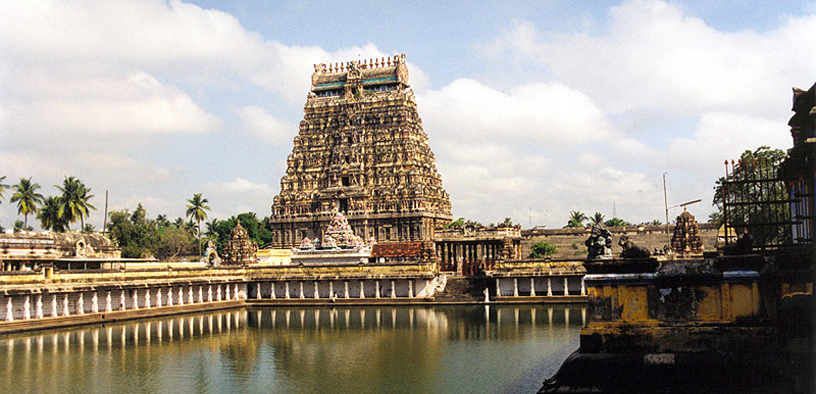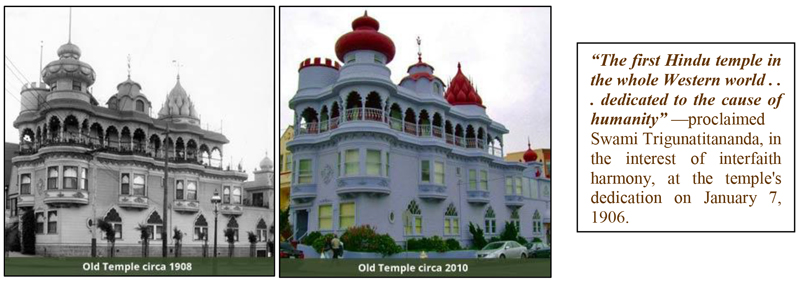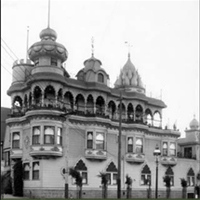How to Define the Impact of Hindu Temples on Hindu Community?
a
 |
| How to Define the Impact of Hindu Temples on Hindu Community? By Bhairavi Pandya, Hindu University of America (HUA) |
| What is a mandir? A mandir or a Hindu temple is generally defined as a house of worship. More specifically the Hindi word mandir comes from the root mandira in Sanskrit. The following interpretation comes from Krishna G. Rampal in his book Sacred Structures: Artistic Renditions of Hindu Temples in Malaysia and Singapore. He writes: “The word mandira is derived from the words man which symbolizes inner-self and dir which means a dwelling place…. A Hindu temple can be a separate structure or part of a building….”
Since the Vedanta Society built the very first Hindu temple in the country, the famous San Francisco temple, in 1906 (see before and after images below), the quest to sustain Hindu faith became a passion through the following years. |
 |
| That quest has translated into new temples that continue to be planned and crafted with beautiful architecture and iconic sculptures; each exemplifying an epitome of India’s religious and spiritual heritage.
In United States, temples are special places of worship, where the community gathers not only to pray, but benefits from special pujas as well as related socio-cultural activities leading us to this question; how do the Hindu temples impact the Hindu community? The relationship between temples and the Hindu community in United States is slightly different compared to India due to many reasons. Firstly there are fewer temples, secondly travel is necessary to visit the temple of your choice, and thirdly due to the “commuters” lifestyle in United States, the Hindu temple becomes a weekend destination not only for adults but also for all children’s educational activities alike. It becomes all the more important to have the temple experience as a way of life and not just an occasional trip to meet an obligation. The sustainability of Hindu faith depends upon the level of immersion and activities offered by the temples to the current immigrants as well as the non-native language speaking new generation. This became a personal quest for the first generation of Hindus that emigrated to U.S.A. where they established the temple as a community resource and got involved in religious activities and volunteering at nearby temples and faith-based centers. There are a variety of religious societies and faith-based groups that have developed a listing of temples; however the information is limited and the effort is disjointed. This energy should be channeled through a unified initiative to document the study of our Hindu quintessential temples and their effect on the Hindu community. “The first Hindu temple in the whole Western world … dedicated to the cause of humanity” —proclaimed Swami Trigunatitananda, in the interest of interfaith harmony, at the temple’s dedication on January 7, 1906. Studies show that a comprehensive document can be developed that identifies not only the various temples located in United States but also list the various activities and experience offered by each temple. Although there is published content and books on temples in North America, the ultimate goal should be to further define the religious and community-based approaches being implemented for the betterment of the Hindu community; to discuss the various architectural styles and iconic sculptures associated with the temples; how are they related to the divine Hindu mythology and scriptures; and how do they affect the temple experience? What are the efforts being undertaken to educate and instill Hindu values in the next generation and ensure sustainability for the future? What are the avenues utilized to promote Hindu awareness in the next generation within the Self, at home, at the temple, in school, and in the society that is predominantly non-Hindu? It becomes all the more important to specify factors such as; does the temple have a website, priest, types of services, architectural style, balavihar, adult classes, coordination with other temples, inter-faith activities, conference participation? Such attribute data will help analyze their effect on the Hindu community. These factors will add value to the North American temple data store and become a living document that can be passed on to the next generation and sow seeds to sustain Hindu faith for the future. The Hindu Community in United States has been asserting to keep its faith alive since Swami Vivekananda represented India and Hinduism and at the Parliament of the World’s Religions in 1893; and Hindus have come a long way since then. It is estimated that today there are more than 400 Hindu temples in USA. This is an exciting time to identify, study the temples, their architecture and their effect on the Hindu community. Together with HMEC and HPEC’s respective executives’ proactive input in this endeavor, a comprehensive listing of Hindu temples is an inevitable success. This is the time when community leaders can participate and forward details on their temples and their activities. The information can be placed in a living document which will include all the various aforementioned factors in a spreadsheet format. This project initiative will be of great advantage as it will provide the Hindu community a common platform to share information and centralize communications towards our common goal- to sustain our Hindu faith beyond the next generation. |
|
About the Author Bhairavi Pandya completed her Bachelors from Syracuse University, NewYork and did her Master’s in Urban Planning from Florida Atlantic University. Currently she is pursuing a project on HIndu Temples at HIndu University of America. |
























